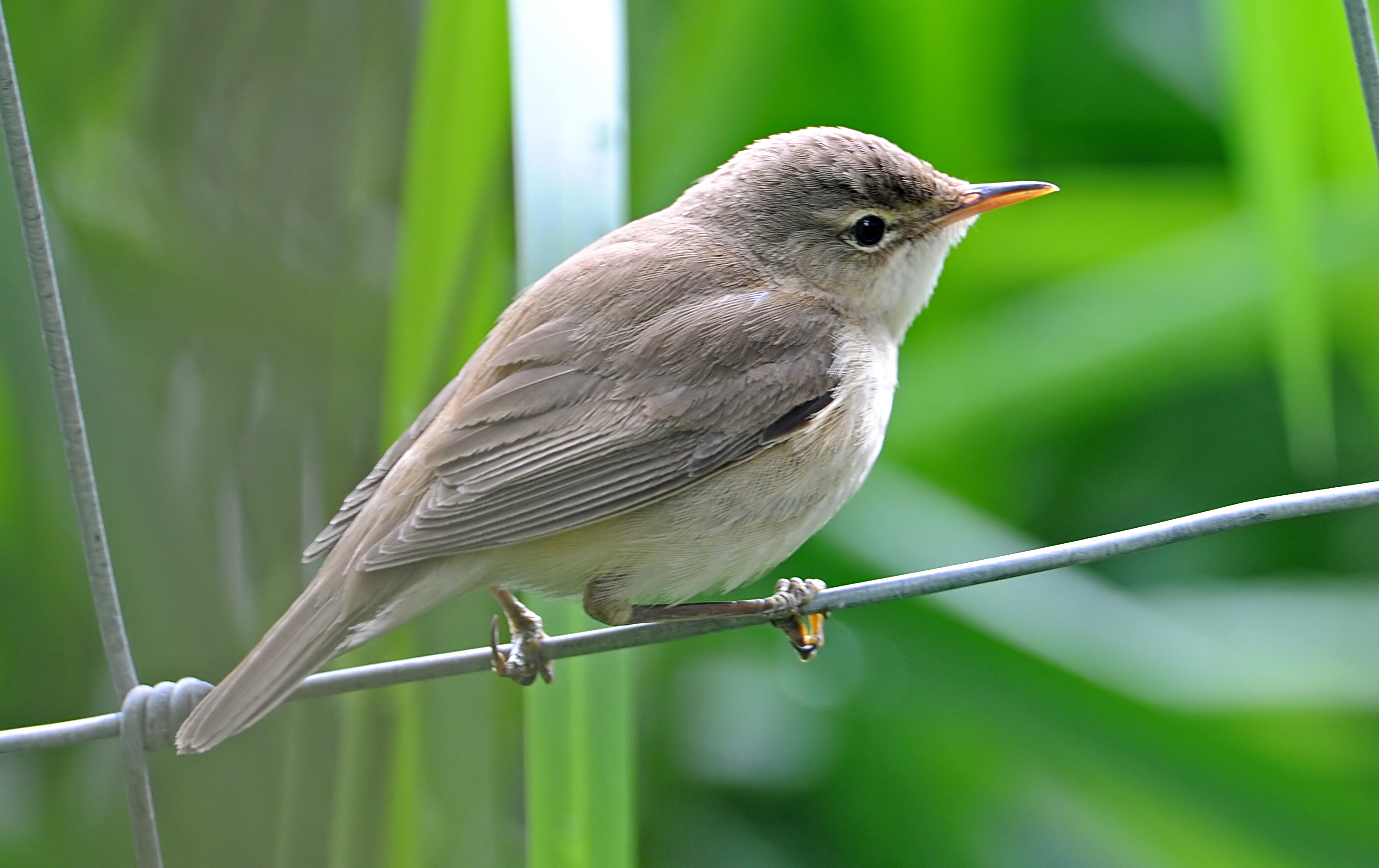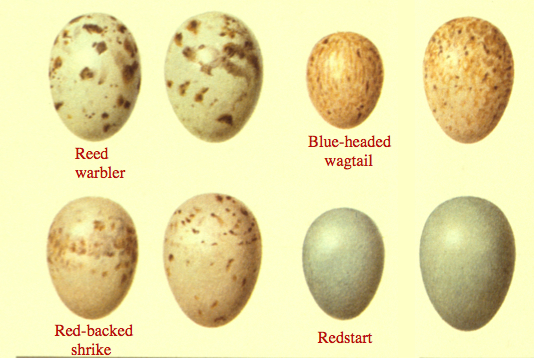After taking the AP Bio exam, I was perusing the #apbio twitter tag and stumbled upon this meme which made me laugh exceptionally hard.
After doing some research, I realized the two species of bird have been coevolving. The cuckoo is a brood parasite, which means it lays its eggs in the nests of other birds, thus forcing the unwitting "foster parents" to hatch and raise the cuckoo's chicks. And because they have been dropping their eggs in the reed warblers' nest so often, the two species have both been trying to find new ways to outsmart one another over the generations.
 |
| A Reed Warbler! How cute <3 |
However, the cuckoo has adapted over time to lay eggs with patterns that are almost indistinguishable from the warbler's own eggs.
 |
| Cuckoo egg patterns mimic their various host's egg patterns |
And warblers have evolved to nest in communities so as to have a sort of 'neighborhood watch' going on at all times. But cuckoo birds actually watch the community of warblers to find the weakest link and swoop in at the right time to swap out one of the warbler's eggs with their own. The whole switch only takes about 10 seconds, too!
Once the egg is in the nest, it's virtually indistinguishable to the warbler who then raises all of the chicks in their nest. After the cuckoo chick is hatched, however, it will take the initiative to eject all of the other eggs in the nest! It does this by pushing the eggs out with its back. Once there are no more chicks to compete for food with, the cuckoo continues to grow and demand food from the warbler until it grows to be too big for the nest and far bigger than the warbler. It reaches its adult size in just two weeks.
And after the full-grown cuckoo leaves the nest and moves on to mate, the process is repeated!
I truly learned something new about the avian world thanks to this year's AP Bio exam and I hope you did too :D
-----------------
Also, while researching all of this, I showed some videos to my friends, told them about the parasitic relationship that cuckoo birds have with their hosts and asked what their opinions were. The general consensus was that cuckoo birds are terrible to their hosts.
I'd have to agree. They are some horrible house guests.

No comments:
Post a Comment